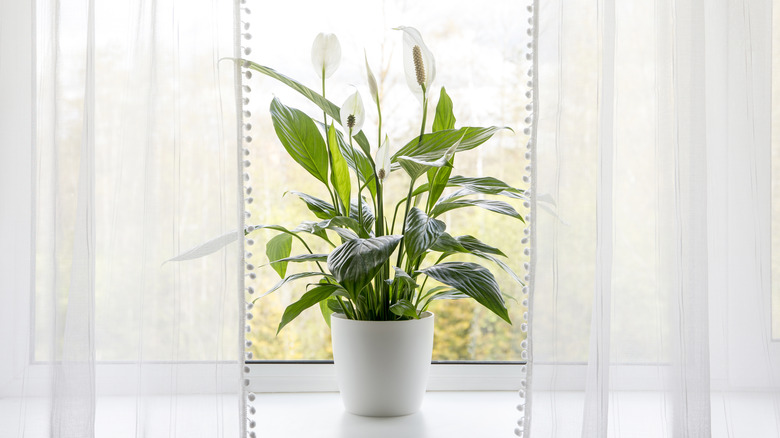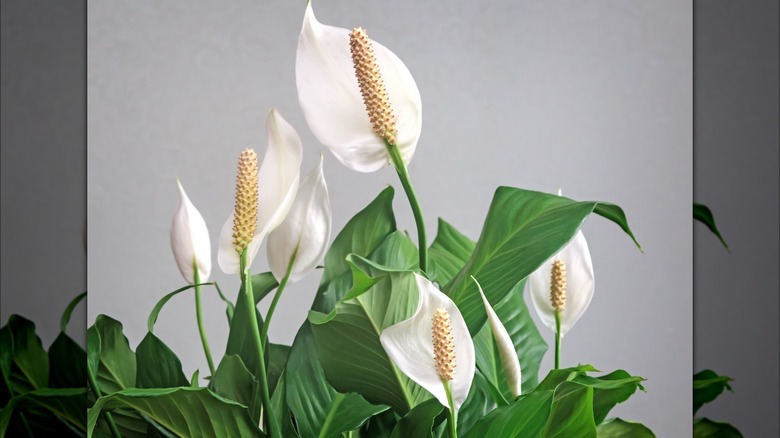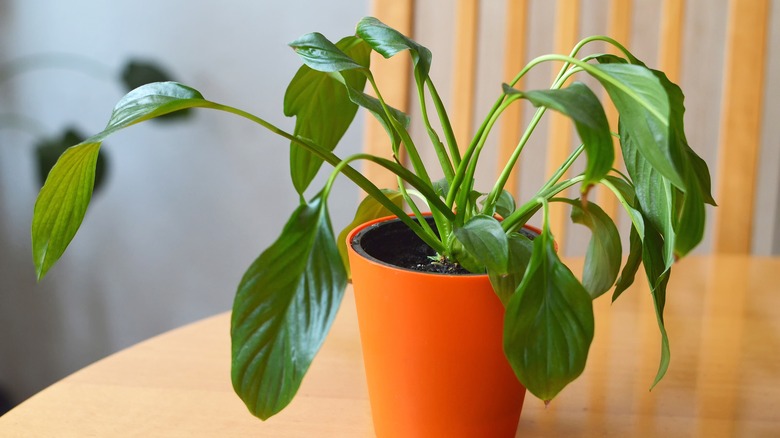Keep Your Peace Lilies Healthy All Winter With These Tips
Peace lilies are widely considered one of the easiest houseplants to grow, and we love them for their gorgeous dark leaves and upright white blooms. When grown as houseplants, peace lilies can live for 10 years or more. But to keep your peace lilies healthy throughout the winter, you'll need to provide the right indoor environment and a little regular maintenance.
These plants are lilies in name only. They are not related to true lilies, which are members of the Liliaceae family. The peace lilies we grow in our homes are more closely related to elephant ears and caladiums as part of the Araceae family of plants. Although you can place your peace lilies outside in the shade in the summer, they are only hardy in USDA Zones 11 and 12, which do not include the continental United States. These plants do not tolerate temperatures below 45 degrees Fahrenheit, so you should keep them indoors or bring them in before the weather gets cool.
Create the ideal indoor environment
Since peace lilies are native to rainforests, they thrive in warm, humid spaces. The indoor environment in which you are most comfortable is also ideal for this beautiful greenery to stay healthy. They do best in homes that are consistently between 65 and 85 degrees Fahrenheit. If you like to keep your home a little cooler at night, that's okay — just make sure it stays above 55 to keep your plants from getting stressed, and never place them near a door where they will be hit with cold winter drafts.
These houseplants also grow in a range of lighting conditions, which is one reason you see them often in public places like offices. While they'll tolerate low light, you will get more blooms and consistent growth in bright, indirect sunlight. As understory plants, peace lilies will not tolerate direct sun because it burns their leaves, so avoid placing them in a sunny window.
Winter plant maintenance
With the right temperature, humidity, and lighting conditions, your peace lily will only require a little bit of maintenance to stay healthy throughout the winter. One challenge of growing houseplants in the winter is keeping humidity levels up. Due to their tropical nature, peace lilies need a humidity level of around 50% or higher; if you're struggling to keep the right level, a pebble tray under your peace lily or a small humidifier will help provide it with the moisture it needs.
Thankfully, it's pretty easy to tell when a peace lily needs water because its leaves will droop dramatically. Your watering schedule will depend on how dry your home environment is, the kind of soil you use, and the type of planter it's in. Water your peace lily any time the leaves droop or when the soil is dry an inch below the surface. There's no need to fertilize peace lilies in the winter since they will go mostly dormant during the shorter days. (In general, these plants don't require a lot of fertilizer, so an all-purpose option applied about every six weeks from late winter through fall is sufficient.) Make adjustments to its watering, lighting, and temperature conditions where necessary, and your lily will be more likely to get through the colder months just fine.


